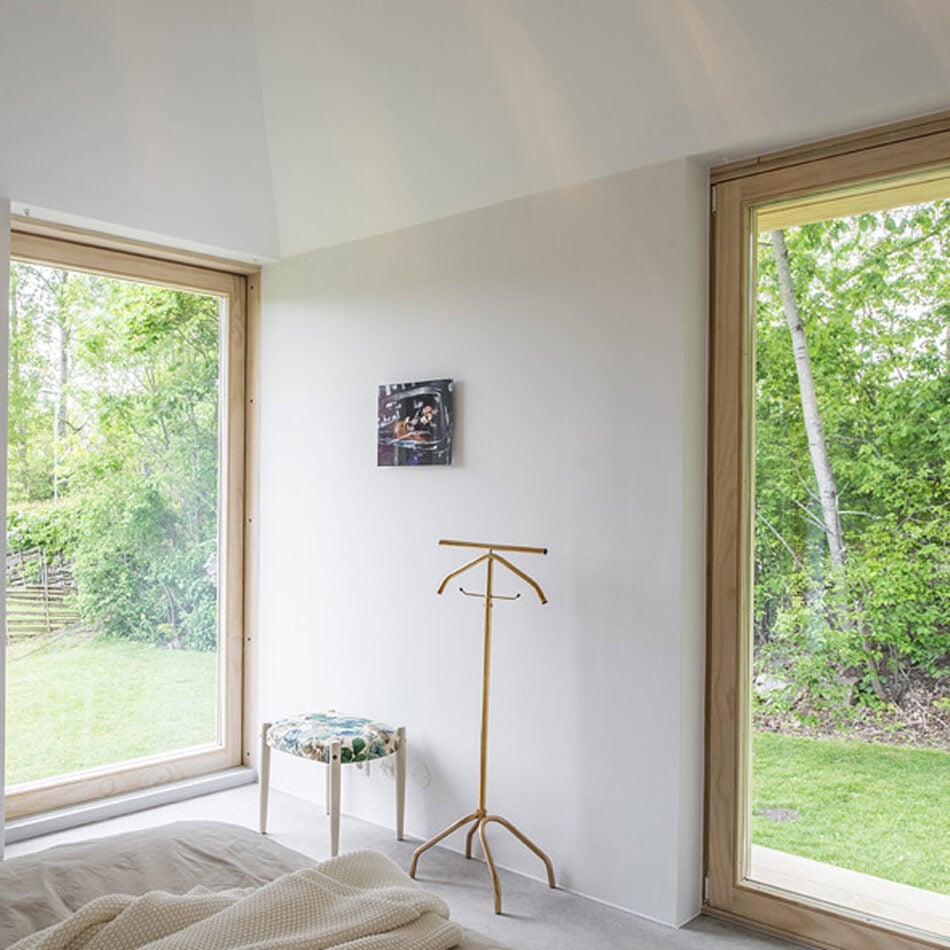
Choosing the right materials for health and wellbeing
07.05.2019

What leads to better productivity and ultimately benefits the company, and the economy?
Where are we now?
Increasingly we faced reports, journals and investigations that offer the same insights into your environment having a major impact on health and wellbeing. It makes sense in simple terms. Natural materials are good for you, unnatural materials are likely to be less good for you, or even bad for you (and the environment).
Let’s clear up what we mean by ‘healthy building’.
There are some construction techniques that would raise more than a few eyebrows if used today. Think asbestos and lead paint. Hopefully one day in the near future PVC and other toxic, unrecyclable materials will join that gang. But healthy building is more than simply not using toxic chemicals; it’s a step above using non-toxic.

We should be choosing the right materials for people as well as for aesthetic.
As per a Japanese study, plastic, metal and glass is impersonal in the workplace and has shown to increase blood pressure and stress levels. Whereas environments rich in natural materials, especially wood, can decrease blood pressure and stress levels.
Less stress, lower blood pressure, healthier immune system. These all add up to healthier and happier employees. This leads to better productivity and ultimately benefits the company, and the economy. Everyone’s a winner.

You may have heard of VOC’s before.
Volatile Organic Compounds. These are chemicals released through the burning of fossil fuels, processing with synthetic materials, and can be present in every day consumer products. These are a socially acceptable poison on human health. Socially acceptable as for many years they were a by-product that may have been misunderstood, or in the balance of cost vs reward deemed worth the health risk. But today, with increasing concern around personal and planetary health, these are poisons that we don’t need to accept. And the easiest way to start reducing them in our day to day is to start without them, rather than starting to remove them.
Why?
Because you already know that anything less is potentially harmful to your health.
So why then do we accept the status quo and not challenge?
Given the opportunity to feel better, have less sick days, potentially help to avoid life threatening conditions. The majority of us should jump at the chance, but we need to transition away from should into will.
If almost your entire day is spent inside. It is our responsibility to ensure that we have a healthy working environment.
And wood is very much an answer.
Switching to wood for construction doesn’t mean that we will suddenly not have to worry about carbon emissions and defeating climate change. But it does offer one strand of possibilities in a much larger environmental piece. Making many smaller changes will build up into widespread change. From the perspective of personal responsibility, is it not your duty to preserve the planet for future generations? We won’t achieve that through continuing with the same high carbon, low re-use practices that we are accustomed to.
Proactive vs. reactive
Did you know that NASA published a list of air filtering plants that remove chemicals like formaldehyde, benzene and ammonia from the air? Naturally improving the air quality around you.
This is great. It’s great that a research organisation has put in the time and funding to compile a list of natural reactive treatments for an unhealthy environment.
But wait a second…
Why are these chemicals in your home in the first place?
Draw a timeline of your life. Hopefully not… But at some point you may become ill as a result of the environment you work and live in. Now would you rather treat that illness with medication? Or would you rather prevent that illness from ever having the opportunity to affect you.
This is essentially the question we must ask ourselves in modern environments.
Don’t look for a cure, look for prevention.
The BRE Biophilic Office is a great example of this.
Taking a human-centred approach to the spaces we sit in. Following research into using nature to inform the building choices and decisions best suited for a healthy environment. Leading to quantifiable improvements in productivity, wellness and a reduction in days absent due to illness.
We have proof. We have examples and we have common sense.
Now we must act, for the sake of our future health.
WHERE TO BUY ACCOYA
for your next projectWhat type of Product are you interested in?
- - Select product type -
-
FIND A SUPPLIER
FIND A INSTALLER
for your next projectWhat type of are you interested in? (optional)
How will your be used?
- - Select type -
-
You are currently on the Accoya site
Would you like to visit the Accoya Site to view all relevant content for your location?